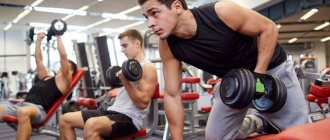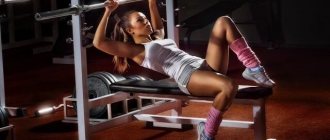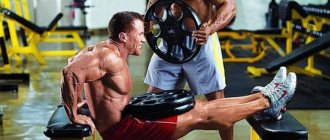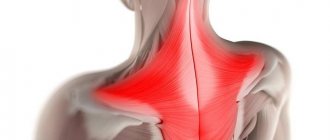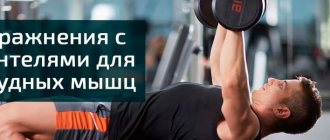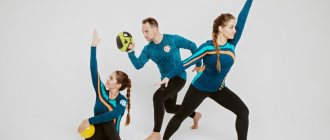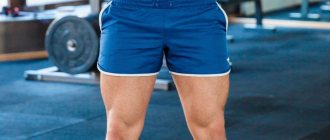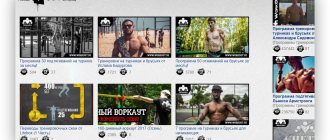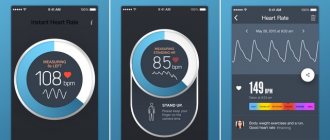Think Louis Simmons' Westside Method is only for elite powerlifters? Think again. Use this world-famous training plan to increase strength and muscle growth.
Almost every city has a gym where only the most serious athletes come to train. Their equipment includes chalk, knee pads and a large number of heavy weight plates. But where do the real elite—the strongest of the strong—go? Which gym do the world's biggest and most powerful athletes call home?
This is Louis Simmons' Westside Barbell, an invite-only gym located in Columbus, Ohio.
By all accounts, this is the coolest powerlifting gym in the world. Simmons, himself a renowned powerlifter and coach, has not only brought together some of the strongest men and women in strength sports - his trainees currently hold 5 of the top 10 powerlifting records of all time - but his techniques and methods continue to attract only the most advanced athletes.
Among his methods for improving already super-large athletes is the Conjugate Method (sometimes called the Westside Method) training system, developed in the USSR, which uses single repetitions as one of the main principles of training.
"Your body responds to demands placed on it, so when you lift heavy weights, that's how you get stronger and stronger," Simmons says. “Remember, when you go to a competition, you are not asked to do three reps, you are asked to do one.”
Many respected physiologists may shudder at the thought of a protocol that involves a short, focused warm-up—a warm-up with a 20-pound barbell—followed by a series of one-repetition sets that quickly increase the weight to an ever-increasing personal best. They will take the so-called "safer" route, which involves a long warm-up and sets of at least 5-6 reps, rather than the rigid, relentless pursuit of weekly strength tests.
In response, we suggest closing the outdated textbook for a moment and considering the facts: the incredibly successful results of Simmons' approach. You might be surprised to learn that the Westside Method not only builds incredible strength, but can also be used to gain lean muscle mass.
Westside history
Since its founding in the early 1980s, Louis's gym, Westside Barbell has boasted numerous champions in powerlifting and other sports, including the NFL and UFC. The record holders include 36 people who bench-pressed more than 300 kilograms - two of them exceeded the 800 mark, and 19 athletes who squatted more than 450 kilograms - two of them reached 540. All these incredible indicators are inscribed on a chalk board that hangs on quite the usual wall of white slabs in the hall, opposite many benches, racks and thousands of kilos of well-worn iron.
Simmons himself has competed for over 50 years and has squatted 417 kilograms, bench pressed 270 kilograms and deadlifted 327 kilograms. Moreover, he is one of only five lifters to reach the Elite level—1% of all competitive powerlifters—in five different weight classes.
Box squat
Simmons, 74, has spent his life studying human development. “I used data and diaries from hundreds of the greatest Soviet and Bulgarian weightlifters to create the principles of the conjugate method,” he says.
I looked at what they were doing; they were way ahead of us in terms of strength training.” This is why the system includes two types of training per week: a low intensity day (called "maximal effort"), when the intensity is 100%, and a higher intensity day (called "dynamic effort"), when we lift weights at the level of 75-85% of 1RM.”
The Westside Method for Muscle Growth
Simmons, a tattooed, determined, bear-like man, is also keenly aware of the underlying problem with his program: the perceived potential for injury. However, thanks to fifty years of experience, he is convinced that his method is not only safe, but that if followed exactly, physical harm can be almost completely avoided.
“Really, only 20% of your strength training here is maximal or near-maximal barbell work,” he says. “The rest, I don’t want to call it bodybuilding, but 80% is hypertrophy training. You should constantly focus on improving your weak areas. This way, you will not have muscle imbalances, you will constantly get stronger and be injury-free. There are too many injuries in this sport, and in principle there should be none at all.”
Rack Concentric Power Squat
Simmons is convinced that the same technique he uses for the men and women who live and breathe powerlifting and record-breaking feats of strength in front of small but passionate spectators can work for ordinary people, those who wants to have an athletic physique and significantly increase muscle mass. Conjugate training is a fast way to achieve these goals. That's because pure strength equals muscle growth—a simple equation as old as athleticism itself.
Coaching career[edit]
Simmons' athletic students continue to cite his methods as fundamental to their training long after they leave his gym. [4] [5] Simmons has also worked as a strength consultant for collegiate and professional sports teams, and his training methods are featured in CrossFit Powerlifting certification courses. [6] His articles on training methods appeared regularly in the critically acclaimed magazine Powerlifting USA
. [7] Simmons owns a private gym, Westside Barbell, in Columbus, Ohio. Membership is by invitation only. [8]
Three exercises you will rarely do
Before we get into the details of the program, there are two key facts to know that often surprise those new to the Westside path. First, contrary to what you might think, you will rarely perform the three main lifts of powerlifting—the bench press, deadlift, and squat. And secondly, as mentioned earlier, you will set new personal records every time you step into the gym.
“I would test the squat, bench press, and deadlift no more than once every 6 to 10 weeks,” Simmons explains. “You don't get stronger by setting records in these exercises; you get stronger by training.”
“You don't get stronger by setting records in the bench press, deadlift and squat;
you get stronger by training.” Specifically, you're using movements similar to the "Big Three"—exercises that cause changes in strength levels and technique, resulting in increased strength in the bench press, squat, and deadlift. So, for bench work, you'll do incline and reverse bench presses, power rack presses, floor presses and bar presses, as well as additional work aimed at developing the upper back and triceps. According to Simmons, these two muscle groups are "the true foundation of a better bench press."
To increase your squat and deadlift strength, you'll do box squats, plate deadlifts, and good mornings, as well as a variety of other exercises, many of which focus on the often-overlooked glutes and hamstrings.
Break records, gain weight
When it comes to breaking the record every practice, Louis and the Westside Club members practice what he preaches. “Ninety-five percent of our training is about a personal best in some exercise, where you beat your best by maybe a couple of pounds,” he says. “This may not seem like much to some, but that’s 24 kilograms a year for exercise you do once a month.”
Besides the obvious physical achievements, there is a mental component. “If you come in every day and break records, your mind immediately tunes in to that. He gets used to success, not failure. When you don't make that kind of progress, that's why people stop there and quit. For this reason, they suffer from mental fatigue. This is impossible with the conjugate system.”
Westside Workout Plan
With that in mind, here's Westside's powerful workout program, boiled down to its simplest elements—that is, without the bands, chains, chalk, and knee braces that Simmons has been using in traditional exercises since 1990 to increase tension at the top of the range of motion. In other words, this program is for anyone who has access to a moderately equipped gym and a burning desire to work hard.
Training split
- Monday (A) - Max lower body work (deadlift/squats)
- Wednesday (B) - maximum load on the upper body (bench)
- Friday (B) - dynamic load on the lower body
- Sunday (D) - dynamic load on the upper body
Plus one day of training weak points: an hour of various exercises, 3-4 sets of 6-10 repetitions.
Floor press
Tips for a more effective workout
The technique was described in detail, but there are nuances to increase the effectiveness of the exercise:
TIP #1. When performing the California press, the load on the elbows is higher than in other triceps exercises, so before performing it, it is necessary to warm up the elbow joints in advance;
TIP No. 2. You should not start training the triceps with it, it should come second or third, after push-ups on the uneven bars or the same press with a narrow grip;
ADVICE No. 3. Do not chase weight, the main feature of this exercise is the feeling of stretching the triceps, if this feeling is absent, reconsider the technique or reduce the working weight.
In terms of safety, a straight bar is more effective, since the EZ bar puts increased stress on the wrists.
Instructions for days of maximum load (days A and B)
Maximum load days (Mondays and Wednesdays) include a personal best - that is, you will perform one main exercise in which you will beat your previous record by 2 kilograms. Start with a thorough warm-up using a barbell, then move on to a one-rep routine, moving up the pyramid as quickly as is safe to achieve a record lift, resting no more than 2-3 minutes between sets.
For example, when doing the incline bench press, if your previous best was 220, you could do 100, 120, 140, 160, 180, 200, and 222.
You should alternate between 4-6 different max effort exercises, one per week, to avoid doing the same 1RM exercise for a month.
After performing the exercise at maximum load, you finish the workout with 4-6 additional exercises for 6-10 reps per set, including various dumbbell presses and intense triceps work on bench press day. “The triceps are the primary mover in the bench press, along with the pecs,” explains Simmons.
You'll also do pulling exercises and hamstring work on your deadlift/squat day.
A. Exercise options for the lower body with maximum load
- Back squats and front box squats
- Deadlift from plates
- Concentric power squat from supports
Note: Each of these exercises can be modified into a “new” exercise by changing the foot position (from narrow to standard and sumo style) and range of motion (for example, barbell rows from blocks located at different heights).
Options for additional exercises for the lower body
- Good morning with a barbell (once a month, 3-5 reps per set)
- Pushing a heavy sled
- Bent-over dumbbell row
- Bent-over barbell row
- Vertical rod pull (broaching)
- Standing barbell clean
- Barbell snatch
- Standing leg curls
- Reverse extension for buttocks and thighs
- Romanian deadlift
Here's what a maximum lower body workout day using the conjugate method might look like in action:
- Barbell Box Squats - 6 sets of 5, 3, 3, 1, 1, 1 reps
- Vertical barbell row - 3 sets of 8-10 reps
- Romanian deadlift – 4 sets of 8-10 reps
- Standing leg curls – 4 sets, 8-10 reps
- Bent-over dumbbell rows - 3 sets of 8-10 reps
B. Exercise options for the upper body with maximum load
- Incline Barbell Press
- Reverse Incline Bench Press
- Bench press on a horizontal bench
- Floor press
- Bar press
Note: Each of these exercises can be modified into a “new” exercise by changing the grip width (from close, standard to wide) and range of motion (for example, placing the pins higher or lower in a power rack).
Options for additional exercises for the upper body
- Incline and Reverse Dumbbell Press
- French press with barbell, EZ bar or dumbbells
- Close grip barbell press
- Pullover with barbell, dumbbells or kettlebells
- Dips
- Push-ups from the floor (different hand widths for support)
Here's what a maximal upper body workout day using the conjugate method might look like:
- Floor Press - 6 sets of 5, 3, 3, 1, 1, 1 reps
- Incline Dumbbell Press – 3 sets of 6-8 reps
- Pullover with dumbbells over a bench – 3 sets of 6-8 reps
- Dips – 3 sets of 8-10 reps (use additional weight if necessary)
- French press – 3 sets of 8-10 reps
Execution Features
Those who see it performed for the first time will think that someone is doing the bench press incorrectly with a narrow grip or is grossly violating the technique of the French bench press.
However, there are 3 important reasons to perform it at least occasionally:
♦ CHANCE TO INCREASE WORKING WEIGHT – the trajectory of the barbell itself is small, but the weight can be decent. Of course, less than with a narrow press, but more than with a French press. Keeping your elbows close to your body makes them easier to control and increases the load on your triceps;
♦ NO DEAD POINT – this means that while performing the exercise, there are no segments where the triceps muscle rests;
♦ POWERFUL LOAD ON THE LONG MUSCLE – amplitude during the exercise, loads this muscle well. Of course, the other two also receive the workload, but it is the long one that works to its fullest. Arnold especially loved this exercise so that while showing double biceps at competitions, the triceps would not look scanty.
To increase the effectiveness of the exercise, perform it on an incline bench with your head down. Only partner insurance is required.
Instructions for dynamic load days (days B and D)
On these days, perform 1-2 main exercises, this time for 10-12 sets of 2 reps, using a working weight of 75-85% of 1RM (usually a weight you can figure out for 6-10 reps), resting no more than a minute between approaches.
On a lower body day, do a variation of the box squat by changing the height or position of the squat rack, and stick with that variation for three weeks before changing it up and re-evaluating your 1RM starting point. Also perform a variation of the rack row. On upper body day, do a variation of the bench press as your main exercise.
Barbell Press
"Perform the exercise at a fast pace," says Simmons. “You have to do it as fast as you can, through the full range of motion.” On dynamic days, we use chains or bands to increase tension and resistance as the end of the range of motion is reached, but if you don't have those tools, just focus on maximizing controlled speed."
After the main exercises, complete the workout with 4-6 accessory exercises for 6-10 reps per set, focusing on the quads, hamstrings, and glutes (and heavy pulling exercises) on deadlift/squat day, as well as the shoulders, back, traps, and triceps. on an upper body workout day. You can select exercises from the list of assistance exercises given above.
Exercise Notes
Simmons is a world-class trainer, so he probably has his own ideas about how to perform the exercises. If you decide to follow the Westside Split and use the suggested exercises and assistive movements, you should heed the following tips.
Box squats
“Perform these exercises in a power rack, squatting on a low box about 8 inches high,” says Louis Simmons. “You squat all the way down and then stand up. This movement helps develop strength when performing deadlifts. If you have weak hips, use a wide stance (sumo squat), and if you need to work more on your lower back, use a narrow stance.”
Deadlift from plates
“We do deadlifts with plates placed on mats that are 6, 10, or 15 centimeters high, or with the barbell on the floor and the athlete standing on the mat,” Simmons says. “We never do regular deadlifts in training—you either stand on the mat or the weights are on the mat. Block rows are performed on the day of maximum lower body work for two of the four weeks of the month.”
Concentric squats in a power rack
"With this exercise, you're only doing the concentric portion of the rep," Simmons says. “In a power rack, you crawl under a barbell that is set in the down position on the supports, stand under it and lift the weight up.”
Good morning with barbell
Westside athletes alternate between two variations of the good morning, performing them with an arched or straight back. In the first case, you hold the barbell throughout the movement as if you were performing a wide stance squat - chest forward, shoulders back, spine arched to maintain a natural arch in the lower back. In the second option, you put your feet together and lean forward, bending at the hips without bending your knees. In this variation, keeping your knees straight engages your back extensors, while bent knees activate your hamstrings to a greater extent.
Good morning
Bench press
When performing the bench press in a power rack, safety stops are optimally used. You place the bench inside the rack, then set the safety stops to the high or low position. The high position limits the barbell's movement to the top half of your typical range of motion, while the low stop position helps you lift the barbell up from that point.
Floor press
The barbell floor press helps create more driving force at the midpoint of the standard bench press's range of motion. Taking the legs out of the equation—yes, the legs are involved in the bench press—the floor press means that all the force is on the chest, shoulders, and triceps.
French press
Do you think French press variations are just for aesthetics? Think again. “I saw on film the great powerlifter Ted Arcidi bench press 270kg for nine reps,” Simmons recalls. “In training, he did a lot of this exercise with the barbell lowered to his nose; I saw him do 350 sets of 6 reps, so it was a tough triceps workout. But that’s where he got most of his bench strength.”
Louis SimmonsBreaking Stagnation: Deadlifts
In recent years, records set in the squat and bench press have not lasted very long. Cause? It's on the surface. Most federations have rules according to which the athlete is weighed 24 hours before the competition - which turns out to be a good thing for health. In 24 hours you can restore your water balance again, which means you will have fewer cramps, sprains and muscle tears during competitions. In the old days, athletes used to pass out during a squat. Or the dizziness was so strong that the barbell fell off the shoulders. Of course, the more you weigh yourself, the more weight you can squat or bench press with. In addition, with the advent of special squat suits, shorts and bench press shirts, athletes began to squat and bench with heavier and heavier weights. But what about deadlifts? Can special equipment help with this exercise? Shawn Coleman said that when he switched to a looser deadlift suit, it helped him in his starting position and he deadlifted 379kg (his new personal best). So gear can help you with your squat and bench and prolong your life in the sport, but when it comes to deadlifting, gear is often a hindrance.
But if you can’t expect much help from the equipment, then what can an athlete who wants to increase his deadlift result hope for? On to competent training! Most lifters deadlift too often and with too heavy a weight. This does not have the best effect on your central nervous system. The best method is to use a variety of exercises that mimic the deadlift or assistance exercises that develop the different muscles involved in the deadlift. This method is called the “Conjugate Method”. Both those muscles that begin the deadlift movement and those that complete it must be strong. You should also pay attention to techniques that help develop speed and acceleration: the faster the bar locks into place, the less likely it is that your grip will break.
Vince Anello, who has a result of 372.5 kg with a body weight of 89 kg, once told me that he owes his results to the variety of auxiliary exercises and techniques. Bill Starr said that “if you want to deadlift more, don’t deadlift.” Bill was an excellent weightlifter who, after switching to powerlifting for a short time, set a national deadlift record of 302 kg in 1970. Whether these athletes realized it or not, they both used the conjugate method. This method was invented in order to develop muscles and special types of strength (initial, accelerating, absolute).
Good morning is a valuable exercise when practicing the conjugate method. For deadlifts, a bent back option is better. Bend at the top of your back first, then lower the weight at the bottom. The legs can be slightly bent to prevent excessive stress on the knee joints. When doing good mornings, always try to imagine that you are doing a deadlift and try to imitate the movement of it. Only you, the person doing good mornings, can evaluate its effectiveness for yourself by, firstly, the load on the back extensors, hamstrings and buttocks, and, secondly, by whether your results in the deadlift will improve. Sean Coleman, before deadlifting 379 kg, did 272 kg for 5 reps in the good morning. If you can do good mornings with a weight of 272 kg x 5 reps, but your deadlift is only 317.5 kg, then this means one thing - you are doing something wrong in training and your training needs to change.
In good mornings, use a variety of bars: straight, curved, safe. Use different bar positions - low and high, different leg positions - narrow and wide, sometimes do good mornings while sitting on a bench. Belts and chains as well as weight releases can be used. It's best to do sets of 1-6 reps. People with large masses should do at least 3 repetitions to increase the tension on the muscles. Since deadlifting a maximum weight takes a few seconds, the duration of a multi-rep good morning set should also last a few seconds.
A variety of squats will also help improve your deadlift performance. Michael Bruegger from Germany shared his “secret” with me, saying that the Olympic squat was his favorite exercise - thanks to it, he increased his deadlift to 402 kg. Eddie Coppin from Belgium pulled 375 kg with a body weight of 84 kg. The core of his training program was also front squats. In the early 1970s, George Clarke pulled 317.5 kg with a body weight of 82 kg and was just shy of lifting 333 kg. The world record remained with Vince Anello. George Clarke's main exercise was the hack squat-deadlift, where the bar is held behind the back. Here's an example of three great lifters who increased their deadlift performance with the help of squats.
Squats with different bar positions will allow you to load the extensors, hips and glutes, i.e. those muscles that are primarily involved in deadlifting. We recommend using the following bars: buffalo bar, safety squat bar, Manta Ray, etc. Exercises with these bars will teach you to stay upright, which is useful for good deadlifting.
If you only do deadlifts and nothing else, then it’s only a matter of time before your results “stand up.” In the worst case scenario, this will happen as a result of injury. Your body does not know how to distribute the load equally between the lower back, middle part and upper back. If in the deadlift the lifting of the weight is carried out mainly by the lower back, and this is exactly what can be observed in most athletes, then injury is guaranteed and is only a matter of time. Performing various auxiliary exercises for the upper back helps distribute the load more evenly between all the back muscles. I'm talking about exercises such as shrugs, lat work, spinal extensor work, good mornings, hyperextensions, reverse hyperextensions, bench exercises for developing the buttocks/hamstrings, heavy sled pulls, and obstacle pulls.
What about the initial and accelerating force? These types of strength are best developed with the help of rubber bands. By attaching bands (bandages) to the bar, you ensure even distribution of the load. The higher the bar rises, the greater the load on it. If your upper range is weak, the bands will teach you to pull faster at the beginning of the movement so that inertia and then acceleration will help you bring the bar to lockout. If you are weak at the start, the bands will teach you to get off the floor faster, because without a fast start, you will not be able to achieve a lockout with a heavy deadlift. For those of you who claim that resistance bands do not help with acceleration, the answer is this: exercises with bands are not performed with maximum weight, but with 60%. As the bar rises upward, the load on it increases. This is called load balancing. Regarding the conflicting information on this topic, I will say that studies in the United States are invariably conducted with college students as subjects. These students, as a rule, are not eager to lift weights, they are also not experienced athletes and are by no means “elite”. However, the conclusions drawn from such studies are presented as the ultimate truth for all exercisers, including American football players and lifters.
If you want to get worthwhile results, then you need to study high-quality athletes. This is exactly what we do at Westside, where only elite lifters (we currently have 43) participate in research. Also, the researcher must be an experienced trainer himself to know what questions to ask. Experienced lifters should take part in the experiments so that they can answer the questions that are asked of them.
Research results don't say much when two different training methods are tested together. This example also shows that plyometrics are being used incorrectly. For example, one lifter performed plyometric exercises between sets of deadlifts. Not only does such plyometrics “jam” the nervous system, impairing the effectiveness of subsequent sets of deadlifts, but, in fact, the deadlift, in turn, also negatively affects the effectiveness of such plyometric exercises. This lifter increased his deadlift by 2.5 kg, which is an insignificant indicator by which one cannot judge the effectiveness of the method. You cannot do plyometrics on max effort day. Plyometrics only helps to develop a gap, i.e. when the bar leaves the floor. This particular lifter had a weak point at the knees and was weak in the lockout. At the same time, he did deadlifts from the frame and pulled the sled. These two exercises help develop the strength needed at the top of the range of motion. Plyometrics develops starting force. In the USA they don’t know how to do plyometric exercises. They “stress” the nervous system so much that heavy deadlifts and squats need to be reduced during the off-season. In general, be careful and don’t read just anything. Not all research can be trusted.
The abdominal muscles are extremely important for deadlifting. The abdominal muscles are the first to tighten, even before the lower back comes into action. Lifters with weak abdominal muscles and strong backs will eventually injure their backs. If the back tenses up first, before the stabilizing abdominal muscles have come into play, it places enormous stress on the lower back. Therefore, you should learn to increase intra-abdominal pressure before deadlifting. This will reduce the risk of disc herniation and greatly reduce the load on the intervertebral discs.
The internal and external oblique muscles of the abdomen play an important role in stabilizing the hip joint, and straightening the legs in a deadlift begins with the tension of these muscles. In the past, when athletes deadlifted more than they squatted, developed obliques were much more common. Lifters back then did a lot more side bends and one-arm deadlifts, which also develop the obliques.
At Westside, we do all our abdominal work while standing, using a lat block. The abdominal muscles must contract downwards, only then the exercise will be effective. The oblique muscles should also be worked while standing. Stand with your back to the lat machine and grab the cable behind your neck. Place one leg in front of the other and bend forward, straining your obliques. This exercise also properly trains the abdominal muscles.
You should do different exercises for your abs. In addition to standing work, leg raises and straight-legged torso raises are useful. Don't be fooled by what bodybuilders look like. Every time I watch their next fitness show, I hear some famous bodybuilder telling everyone to keep their knees bent to “take the pressure off your lower back.” So much for “pulling your belly in,” ha! If only their abs were half as strong as they look, they wouldn't have to worry about their lower back.
Although a small waist makes it easier to deadlift, such a waist must be extremely strong. When John Kaka deadlifted 395 kg, his abs were visible 50 m away, despite the fact that he was wearing a suit. The best method for using the abs in the deadlift was given to me by Bob Peoples. He told me that you need to breathe only from your stomach, not from your chest. This stabilizes and supports the lower back and does not lengthen the back. And the shorter the back, the greater the athlete’s chances of achieving success in the deadlift. If you have long legs, a short torso and long arms, then you can consider that you were born to deadlift.
However, there is something more important than physique. This is the attitude. The deadlift is a tough exercise, especially at the end of a long competition. You need to train with a killer attitude, otherwise you're just doing fitness. And these are two “big differences”.
